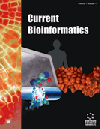- Home
- A-Z Publications
- Current Bioinformatics
- Previous Issues
- Volume 19, Issue 1, 2024
Current Bioinformatics - Volume 19, Issue 1, 2024
Volume 19, Issue 1, 2024
-
-
Translation of Circular RNAs: Functions of Translated Products and Related Bioinformatics Approaches
More LessAuthors: Jae Y. Hwang, Tae Lim Kook, Sydney M. Paulus and Juw Won ParkOver the past two decades, studies have discovered a special form of alternative splicing (AS) that produces a circular form of RNA. This stands in contrast to normal AS, which produces a linear form of RNA. Although these circRNAs have garnered considerable attention in the scientific community for their biogenesis and functions, the focus of these studies has been on the regulatory role of circRNAs with the assumptio Read More
-
-
-
Recommendations for Bioinformatic Tools in lncRNA Research
More LessAuthors: Rebecca Distefano, Mirolyuba Ilieva, Sarah Rennie and Shizuka UchidaLong non-coding RNAs (lncRNAs) typically refer to non-protein coding RNAs that are longer than 200 nucleotides. Historically dismissed as junk DNA, over two decades of research have revealed that lncRNAs bind to other macromolecules (e.g., DNA, RNA, and/or proteins) to modulate signaling pathways and maintain organism viability. Their discovery has been significantly aided by the development of bioinformatics tools in rec Read More
-
-
-
Computational Methods for Functional Characterization of lncRNAS in Human Diseases: A Focus on Co-Expression Networks
More LessAuthors: Prabhash Jha, Miguel Barbeiro, Adrien Lupieri, Elena Aikawa, Shizuka Uchida and Masanori AikawaTreatment of many human diseases involves small-molecule drugs.Some target proteins, however, are not druggable with traditional strategies. Innovative RNA-targeted therapeutics may overcome such a challenge. Long noncoding RNAs (lncRNAs) are transcribed RNAs that do not translate into proteins. Their ability to interact with DNA, RNA, microRNAs (miRNAs), and proteins makes them an interesting target for regulating Read More
-
-
-
miRNA, siRNA, and lncRNA: Recent Development of Bioinformatics Tools and Databases in Support of Combating Different Diseases
More LessAuthors: Chiranjib Chakraborty, Manojit Bhattacharya and Ashish Ranjan SharmaToday, the bioinformatics tool and database development are one of the most significant research areas in computational biology. Computational biologists are developing diverse bioinformatics tools and databases in the various fields of biological science. Nowadays, several non-coding RNAs (ncRNA) have been studied extensively, which act as a mediator of the regulation of gene expression. ncRNA is a functional RNA molecu Read More
-
-
-
Representation Learning of Biological Concepts: A Systematic Review
More LessAuthors: Yuntao Yang, Xu Zuo, Avisha Das, Hua Xu and Wenjin ZhengObjective: Representation learning in the context of biological concepts involves acquiring their numerical representations through various sources of biological information, such as sequences, interactions, and literature. This study has conducted a comprehensive systematic review by analyzing both quantitative and qualitative data to provide an overview of this field. Methods: Our systematic review involved searching f Read More
-
-
-
Interplay of miRNA-TF-Gene Through a Novel Six-node Feed-forward Loop Identified Inflammatory Genes as Key Regulators in Type-2 Diabetes
More LessBackground: Intricacy in the pathological processes of type 2 diabetes (T2D) invites a need to understand gene regulation at the systems level. However, deciphering the complex gene modulation requires regulatory network construction. Objective: The study aims to construct a six-node feed-forward loop (FFL) to analyze all the diverse inter- and intra- interactions between microRNAs (miRNA) and transcription factors (TF Read More
-
-
-
SVM-Root: Identification of Root-Associated Proteins in Plants by Employing the Support Vector Machine with Sequence-Derived Features
More LessBackground: Root is a desirable trait for modern plant breeding programs, as the roots play a pivotal role in the growth and development of plants. Therefore, identification of the genes governing the root traits is an essential research component. With regard to the identification of root-associated genes/proteins, the existing wet-lab experiments are resource intensive and the gene expression studies are species-specific. Read More
-
Volumes & issues
-
Volume 20 (2025)
-
Volume 19 (2024)
-
Volume 18 (2023)
-
Volume 17 (2022)
-
Volume 16 (2021)
-
Volume 15 (2020)
-
Volume 14 (2019)
-
Volume 13 (2018)
-
Volume 12 (2017)
-
Volume 11 (2016)
-
Volume 10 (2015)
-
Volume 9 (2014)
-
Volume 8 (2013)
-
Volume 7 (2012)
-
Volume 6 (2011)
-
Volume 5 (2010)
-
Volume 4 (2009)
-
Volume 3 (2008)
-
Volume 2 (2007)
-
Volume 1 (2006)
Most Read This Month
Article
content/journals/cbio
Journal
10
5
false
en


